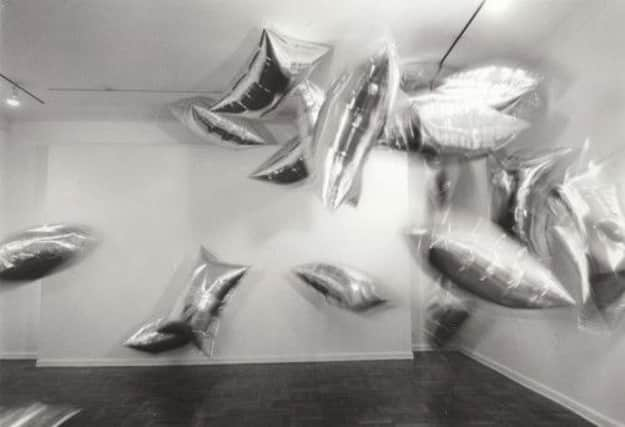Gallery poses material questions


THOUSANDS of boiled sweets and floating silver balloons sound like the perfect addition to any 10-year-old’s birthday party, but these objects are currently on display at the Henry Moore Institute.
They are on display at the Leeds gallery alongside ancient Chinese jades, a lump of asphalt and a tiny indoor garden.
Advertisement
Hide AdAdvertisement
Hide AdIndifferent Matter: From Object to Sculpture takes its name from the idea that objects become meaningful through the ways people interact with them – from the names they are given to the functions they perform.
“The exhibition title refers to the idea that these objects remain the same however they are labelled,” says Pavel Pys, displays and exhibitions curator at the Henry Moore Institute, “they can be given a name and they are indifferent to it – it doesn’t change their properties. The objects are indifferent to the meanings we give them.”
On entering the main gallery, you are immediately confronted by Felix Gonzalez Torres’ 1991 work Untitled (Placebo) – a glimmering rectangle consisting of thousands of silver-wrapped sweets arranged carefully on the gallery floor. “What makes this work so unique is that everyone is invited to touch the art,” says Lisa Le Feuvre, head of sculpture studies at the Institute, “you can even take them away with you and eat them. They’re all pineapple flavoured – they’re quite tasty.”
At the end of each day, the sweets are replenished for the next visitors to enjoy.
Advertisement
Hide AdAdvertisement
Hide AdUntitled (Placebo) isn’t the only exhibit requiring constant maintenance. Also on display is Hans Haacke’s 1967 work Grass Cube – a Perspex box holding a tray of grass-seeded soil which will grow during the exhibition.
These works are displayed alongside ancient Chinese jades whose purposes and creators are shrouded in mystery, and a recently discovered mineral that has yet to be given an official name by the International Mineralogical Association. “As a material, these things are quite indifferent to the name you place upon them,” says Pavel, “we have a mineral that is two million years old, but has only recently been discovered and is yet to be named. We’re going to have to change the label when the journal article comes out with its official name. In reality the mineral will still be sitting there, unchanged – the lump of rock will be the same. So this matter is absolutely indifferent to the desires that we project upon it.”
The central room of the gallery houses Andy Warhol’s 1966 work Silver Clouds – where half-inflated balloons float around the gallery and collide with each other and other works on display.
In the final gallery, Robert Smithson’s 1967 work Asphalt Lump, which started life as a discarded by-product of steel production, is exhibited next to eoliths – chips of flint originally believed to be made by early man.
Advertisement
Hide AdAdvertisement
Hide AdLe Feuvre says: “A 13-year-old might enjoy the fact that there are sculptures made out of sweets that they can touch and can take home and eat. A retired mineralologist might be intrigued by the fact that we’ve got a recently discovered mineral that is millions of years old, but hasn’t been named yet. A five-year-old may love the silver balloons floating around the gallery, and a professor in art history might appreciate it in a different way. Everyone’s experience is unique and I think that’s what makes it exciting.”
• Indifferent Matter: From Object to Sculpture, Henry Moore Institute to October 20.